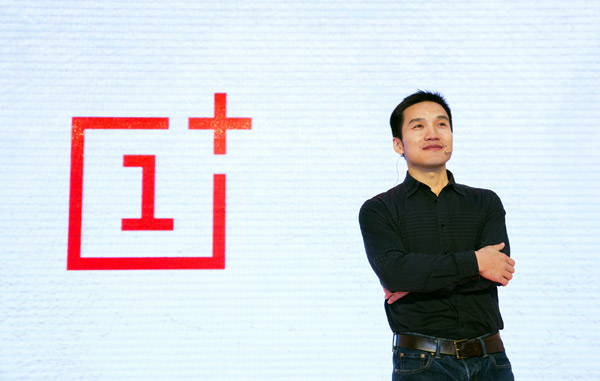|
 |
OnePlus is a newly established Chinese smartphone brand officially announced on Jan 13 in Beijing.
It's not just another phone brand by low-cost manufacturing China or aimed at less developed markets. OnePlus will be about high specs, comparatively low prices, selling directly online and shipping to the rest of the world, especially developed markets.
It sounds like the Google Nexus model but also similar to that of Xiaomi, the rising star in China's smartphone market. Like Xiaomi, OnePlus invites early adopters to make decisions on specs and features, using online forums or other forms of social media to engage its audience. And Xiaomi is expanding to overseas markets too. It has established a presence in Taiwan and recently announced plans to enter Singapore. The latest rumor is that the company plans to ship low-cost phones to countries like Japan.
One big difference: OnePlus is partners with CyanogenMod on a custom system while Xiaomi has a big team working on customized Android ROM, named MIUI.
OnePlus One, the startup's first flagship model, will be launched in the second quarter. Considering consumer preferences in some western countries, OnePlus One will come in black and white. For this year the company will be focusing on the phone. More gadgets or accessories will be added later. OnePlus products will be sold on its own website and delivered by partner delivery companies.
OPPO
It's not that the OnePlus team started from scratch. It's a venture backed by the people behind OPPO, a Chinese consumer electronics brand where the core team of OnePlus is from. Pete Lau, founder of OnePlus, was VP at OPPO in charge of Blue-ray DVD players. OnePlus will take advantage of OPPO's smartphone manufacturing capability.
OPPO is a spinoff from BBK, one of the most famous consumer electronics makers in China in the late 1990's and early 2000's. BBK's VCD player was one of the most popular back then. The establishment of OPPO itself several years ago was for international expansion.
The OPPO smartphone, positioned as a premium brand for women, is one of the most profitable smartphone makers (including Xiaomi ) in China. Different from Xiaomi, OPPO has a whole supply chain, from factories to R&D. The company promises to use the highest quality components and the best hardware available. It's a smartphone brand that has been trying to be creative. OPPO Finder, launched in mid-2012, claims it's the thinnest smartphone around the world No. 1, the latest flagship model released in September 2013, has a touch panel on the back, a rotating camera, and an accompanying accessoire.
OPPO phones, according to Mr. Lau, have sold well in Southeast Asian countries such as Indonesia. But the OPPO Blue-ray DVD player turned out to be a more successful product line as an international brand. OPPO's are sold well in high-end DVD and Blue-ray player markets in the US and Europe.
To design good quality Blue-ray players for international markets, Pete Lau invited designers from various countries. This time he has already had employees from 12 countries. He doesn't think there is too big a difference between producing an international Blue-ray player brand and one for smartphone and other mobile gadgets.
But one big difference is the smartphone runs an operating system with a whole software ecosystem behind it. It's interesting that a lot of people from the traditional hardware manufacturing world don't buy the idea of building an ecosystem and making money there, as Xiaomi has always touted. Xiaomi said again and again that MIUI is the long tail in terms of future revenue after one-time gains from smartphone sales. What's true is Xiaomi has earned considerable revenue from mobile gaming, paid non-gaming apps, searches, paid themes, etc. OnePlus has a reason for choosing CyanogenMod as it wants to appeal to western users who, so far, prefer clean ROMs to those with more features.
It took three years for Xiaomi to arrive where it is today, with 30 million MIUI users and over 26 million phones sold as of 2013. The Xiaomi way of distribution and user engagement has been recognized by some phone makers, old or new, in China. But more than a few think the Xiaomi model can be surpassed. As for OnePlus, Lau said the smartphone market is big enough to accommodate one more player. But OnePlus cannot be the only Chinese brand of this kind to emerge this year or target overseas markets.
|
 Steve Kondik, funder of CyanogenMod, attends a question and answer session of a press event on Jan 13, 2014 at Beijing's 798 Art District. [Photo / forums.oneplus.net]
|
